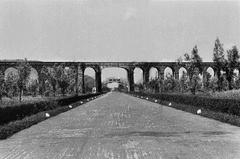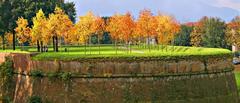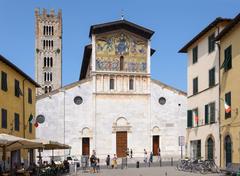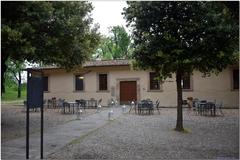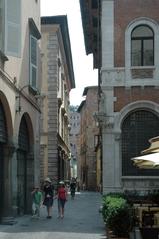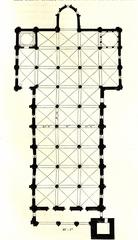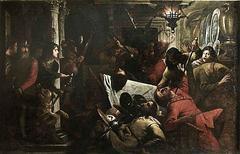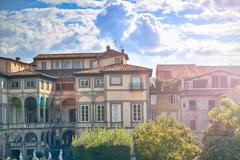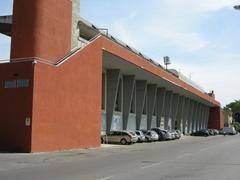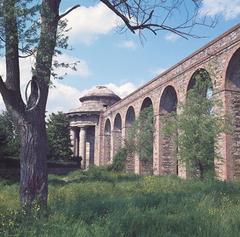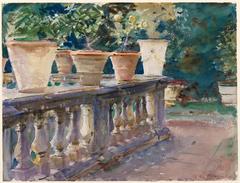Baluardo Cairoli Lucca: Visiting Hours, Tickets, and Historical Sites Guide
Date: 14/06/2025
Introduction: Baluardo Cairoli’s Historical Importance and Visitor Guide
Baluardo Cairoli, nestled within the celebrated Renaissance-era city walls of Lucca, Italy, is a striking symbol of the city’s enduring military heritage and vibrant civic life. Built between the early 16th and late 17th centuries, this bastion is one of eleven monumental ramparts that protected the Republic of Lucca during times of political upheaval in central Italy. Designed with pioneering bastioned fortification techniques, Baluardo Cairoli features massive brick and earthwork structures, angular forms for optimal defense, and historic artillery platforms—all of which highlight its critical role in the city’s defense.
Today, Baluardo Cairoli serves as a beloved public space, offering a scenic promenade, panoramic views over Lucca and the Tuscan countryside, and venues for cultural events. Visitors can access the site freely year-round, taking advantage of well-maintained paths suitable for walking and cycling, with accessibility features for most visitors. Guided tours are available through local agencies and provide deeper insight into the bastion’s architectural and historical context.
This comprehensive guide details everything you need to know about visiting Baluardo Cairoli: its history, architecture, visitor information (including opening hours and tickets), accessibility, nearby attractions, special events, and travel tips. For further exploration of Lucca’s fortifications and current cultural highlights, consult official resources like Turismo Lucca, visititaly.eu, and Savoring Italy.
Table of Contents
- Origins and Construction
- Architectural Features and Defensive Role
- Historical Evolution
- Baluardo Cairoli within Lucca’s Walls
- Cultural and Social Impact
- Preservation and Visitor Experience
- Visiting Hours, Tickets, and Accessibility
- Travel Tips and Nearby Attractions
- Special Events and Guided Tours
- Visuals and Media Suggestions
- FAQs
- Conclusion and Recommendations
Origins and Construction
Baluardo Cairoli is one of the eleven bastions that punctuate Lucca’s Renaissance wall circuit. Built between 1504 and the late 17th century, its construction was driven by Lucca’s need to defend against powerful neighbors like Florence and Modena. The city employed leading military engineers who incorporated cutting-edge bastioned fortification designs, making the ramparts resilient to artillery and capable of overlapping defensive fire (visititaly.eu; discoverwalks.com).
Architectural Features and Defensive Role
Baluardo Cairoli is defined by its angular, protruding structure, thick brick walls, and open, grassy top—originally designed as platforms for cannons and defensive troops. The rampart’s robust construction reflects its original purpose as a bulwark against sieges. The entire wall circuit is approximately 4.2 kilometers long and 12 meters high, and links eleven baluardi with twelve curtain walls and six monumental gates (visititaly.eu).
Historical Evolution
Although the walls and bastions, including Cairoli, never faced a major siege, their imposing presence successfully deterred attacks and preserved Lucca’s independence for centuries. By the 19th century, their military role diminished, and under Maria Luisa of Bourbon, the walls were transformed into a public park. The bastions thus became leisure and cultural spaces, a function they continue to serve (visititaly.eu).
Baluardo Cairoli within Lucca’s Walls
Located along the northern segment of the wall circuit, Baluardo Cairoli offers panoramic views over Lucca’s historic skyline and the Tuscan countryside. Its strategic placement provided overlapping fields of fire during its defensive heyday and now provides a unique vantage point for visitors, with views of landmarks such as the apse of San Frediano and the city’s medieval towers (turismo.lucca.it).
Cultural and Social Impact
The adaptive reuse of Baluardo Cairoli, and Lucca’s other ramparts, underscores the city’s ability to weave its heritage into contemporary life. Today, the ramparts are lively spaces for walking, cycling, community events, and cultural exhibitions. The transformation from military to social and cultural use has made the walls the beating heart of Lucca (visititaly.eu).
Preservation and Visitor Experience
Local heritage authorities oversee the preservation of Baluardo Cairoli, ensuring the rampart remains accessible and structurally sound. Restoration efforts have stabilized the brickwork and adapted internal spaces for new uses. The main wall promenade is open year-round, 7:00 AM to 10:00 PM, and free to enter. Guided tours are available for a fee and are highly recommended for those seeking expert insight (catalogo.beniculturali.it).
Visiting Hours, Tickets, and Accessibility
- Hours: Open daily, generally from 7:00 AM to 10:00 PM (some guides mention 8:00 AM to sunset; check official sources for updates).
- Admission: Free access; guided tours may require a fee (typically €10–€20).
- Accessibility: The promenade and most sections are wheelchair-accessible, though some historic areas may present minor challenges. Assistance is advised for visitors with mobility issues.
- Location: Northeastern segment near Porta Elisa, easily reachable on foot or by bicycle from the city center.
Travel Tips and Nearby Attractions
- Combine your visit with other notable Lucca sites: Guinigi Tower, San Michele in Foro, and Lucca Cathedral.
- Best times to visit are early mornings and late afternoons for pleasant temperatures and optimal lighting.
- Cultural events often take place on the ramparts; check the local calendar for current happenings.
- Amenities: Benches, shaded areas, and nearby cafés enhance comfort during your visit.
Special Events and Guided Tours
Baluardo Cairoli hosts various cultural events, especially during the annual Lucca Historiae Fest in June, which brings historical reenactments, exhibitions, and performances to the bastion (Lucca Historiae Fest). Guided tours—both general and thematic—are available year-round; book in advance during peak seasons.
Visuals and Media Suggestions
- High-quality images of Baluardo Cairoli’s ramparts, artillery platforms, and panoramic views (alt text: “Baluardo Cairoli panoramic view, Lucca city walls ramparts”).
- Interactive maps and virtual tours are available here.
- Downloadable audio guides via the Audiala app for immersive on-site exploration.
Frequently Asked Questions (FAQ)
Q: What are the visiting hours for Baluardo Cairoli?
A: Generally open 7:00 AM–10:00 PM; check the official website for seasonal variations.
Q: Is there an entrance fee?
A: No, access to the walls and Baluardo Cairoli is free. Guided tours may require a ticket.
Q: Are guided tours available?
A: Yes, they can be booked online or through local agencies.
Q: Is Baluardo Cairoli accessible to people with disabilities?
A: Most sections are accessible, but some areas have uneven surfaces; assistance is recommended.
Q: Can I cycle along the walls?
A: Yes, the promenade is suitable for both walking and cycling.
Q: Are there amenities nearby?
A: Cafés, benches, and shops are located near the city center and main gates.
Recommendations for a Memorable Visit
- Allocate at least an hour to explore Baluardo Cairoli and enjoy its views.
- Bring a camera or smartphone for panoramic shots, especially during the golden hour.
- Rent a bicycle to complete the circuit of the walls.
- Check for cultural events during your visit, particularly in June.
- Wear comfortable shoes and bring water, especially in warmer months.
Summary and Final Tips
Baluardo Cairoli exemplifies Lucca’s remarkable blend of Renaissance military ingenuity, historical preservation, and contemporary cultural vitality. Its origins as an artillery bastion, evolution into a public space, and current status as a vibrant cultural venue offer visitors a unique window into Lucca’s heritage. With free, year-round access, guided tours, virtual resources, and proximity to other historic sites, Baluardo Cairoli is essential to any exploration of Lucca.
For the latest updates on visiting hours, accessibility, guided tours, and events, consult the Turismo Lucca portal and the Italian Cultural Heritage Catalog. Download the Audiala app for immersive audio tours, and follow us on social media for more travel tips and event news.
Experience firsthand the harmony of history and modern life at Baluardo Cairoli—where Lucca’s enduring spirit is on full display.
References
- Storia delle mura di Lucca: da baluardo difensivo ad attrazione turistica (visititaly.eu)
- Walk on the city walls of Lucca (Turismo Lucca)
- Lucca, Italy: Complete Travel Guide (Savoring Italy)
- Mura di Lucca – Baluardo Cairoli 360° Virtual Tour (ThinkLab360)
- Lucca Historiae Fest
- Baluardo Cairoli Catalog Entry (Catalogo Beni Culturali)
